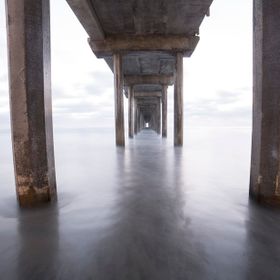

dunestewart
FollowViews
270
Likes
Top Ranks
Same photographer See allBehind The Lens
Behind The Lens
Location
I took this photo in Joshua Tree National Park in the provided parking lot. This is truly what I believe to be my best and favorite photograph. It is the reason people started to take my profession seriously instead of considering it as a hobby.Time
It was a remarkable journey to this destination. This specific shot was around 2am during the fall/winter season in late November. I struggled trying to find the perfect time of day to construct this image, because as I continuously ventured out on a 40 minute drive to get a "test shot," I found something new to study for correction every time! It must have taken about a month before I realized what the basic essentials were to take a star photo.Lighting
I wanted to get the clear, crisp, milky way photo that I viewed several hundred times, because the idea of a full sky was absent my entire life up until this point. I did not modify light in any way in this specific photo, and only used long exposure and the back light of the Coachella Valley to give extra depth of field.Equipment
This photo was shot with a Canon Rebel T3i with a 10-18mm lens and a SunPak 5858D tripod. There was no other equipment involved in the process. This photo was shot at a 30s exposure on Manual Mode with ISO 1600.Inspiration
After locating information about how to shoot a Milky Way photo, I timed my next adventure precisely to match with the moon phase calendar, and checked DarkSiteFinder to locate where the best/closest area would be to shoot a Milky Way photo. I was so excited, because I had my friend Jarrel with me for the ride over to Joshua Tree, and he was just as excited about doing the photo even though he was not into photography.Editing
At the time was I was not very proficient with Photoshop, but I knew the basic essentials with Lightroom. I usually don't have to do much editing since I was taught to do most of the work in-camera. I did increase contrast and clarity, but I lowered the white balance temperature to give a blue hue. I had my professional photography mentor Corey Terrill, helping me create a photo that would both please my intentions and consumer attraction.In my camera bag
At the time I packed 3 lenses (10-18mm, 18-55m, 75-300mm) and my Canon Rebel T3i. I also always had a long exposure remote control since I would do exposures from 30s-2m. Now that I have advanced through basic skills, I now pack a Canon 6D with a Rokinon 14mm, Canon 50mm, and my Tamron 70-200mm. I also now carry an external NEEWER speedlite with flash gels for painting with light.Feedback
When searching on DarkSiteFinder look for a blue color or lower, because green is still okay, but the best results will come from the lower values. Come to the destination ready to shoot, because you might be troubleshooting for an hour, and before you know it, your time window has closed. Carry a long exposure remote control with you, because if you need anything longer than 30s, your finger is going to be tired from holding the shutter button down forever. It will also help from preventing camera shake. I recommend bringing a speedlite with you if you want to capture a well-lit landscape with the milky way, otherwise you will have a silhouette of the objects in front of you. Lastly, try to shoot at your native ISO, because the one thing I would like to change about this photo, is the amount of noise that was captured from having an ISO of 1600.

























